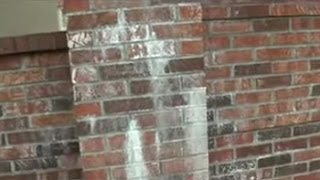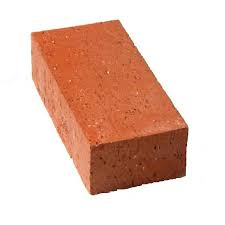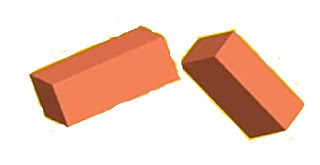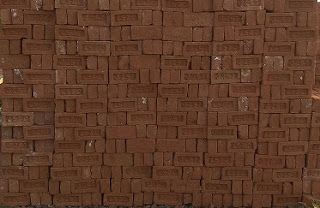Table of Contents
Different Types of Tests on Bricks
Bricks are artificial stones, these are usually made of clay. These are used in building construction and for monumental purposes. These are one of the basic materials used for wall construction.
These are easily available, cheap and light-weighted. Different types of bricks can be manufactured from different materials such as mud bricks, refractory bricks, silica bricks, cement and bricks, fire bricks etc.
A brick undergoes the following tests to find out its suitability for the construction work :
- Crushing Strength Test
- Water Absorption Test
- Presence of Soluble salts or Efflorescence Test
- Hardness Test
- Shape and Size Test
- Soundness Test
- Structure Test
- Colour Test
- Impact Test
Also, Read – Soundness Test of Cement By Le-chatelier apparatus
Crushing Strength Test
The minimum crushing strength of brick should be 105 kg/cm2. The crushing strength of brick can be found out with the help of a crushing testing machine.
The brick is fixed to the crushing testing machine and then crushing force is applied to the brick during the testing operation.
Compressive Strength = Maximum Load at Failure(N/mm2) / Area of Specimen(mm2)
Observation Table
| S.No. | Actual Size of Brick(L x B) in mm | Compressive Load in KN | Compressive Strength in N/mm2 |
| 1 | 220 x 110 | 285 | 11.7 |
| 2 | 230 x 110 | 280 | 11.06 |
| 3 | 230 x 110 | 290 | 11.46 |
| 4 | 220 x 110 | 283 | 11.69 |
| 5 | 220 x 110 | 280 | 11.57 |
Average Compressive Strength = 11.496 N/mm2
Compressive Strength of Different Types of Bricks
- First-class brick – 105 kg/cm2 or 10.3 N/mm2
- 2nd class brick – 70 kg/cm2 or 6.86 N/mm2
- Common building brick – 35 kg/cm2 or 3.43 N/mm2
- Sundried brick – 15 to 25 kg/cm2 or 1.47 to 2.45 N/mm2
Also, read – Types of Brick Bond, Difference Between English Bond and Flemish Bond
Water Absorption Test
A brick is dried is weighted. It is then immersed in water for a period of 24 hours. It is weighed again and the difference in weight indicates the amount of water absorbed by the brick.
It should not, in any case, exceed 20% of the weight of dry brick for first class.
Water absorption (%) = [(W2-W1) / W1] x 100
Where
W1 = Dry Brick Weight (oven Dry Condition after 24 hours at temperature 110 to 150 °C)
W2 = Wet Brick Weight ( After Immersion for 24 Hours)
Presence of soluble salt or Efflorescence
For finding out the presence of soluble salts in brick, it is immersed in water for 24 hours. It is then taken out and allowed to dry.
If a white deposit covers about 10% surface, the efflorescence is said to be slight and it is considered moderate when the white deposit covers about 50% of the surface.
If white deposits are found on more than 50% of the surface, the efflorescence is heavy and it is treated as serious and brick is rejected.

Also, Read – Difference Between Brick Masonry and Stone Masonry
Hardness
In this test, a scratch is tried to make on the brick surface with the help of a fingernail. If no impression is left on the surface, the brick is taken as enough hard.
Shape and Size
In this test, a brick is closely observed. It should be of standard size and its shape should be truly rectangular with Sharp edges and corners. For this purpose, 20 bricks of standard size (190 mm x 90 mm x 90 mm) are selected at random and they are stacked lengthwise, along with the width and along with the height. For good bricks, the results should be within the following permissible limits:
- Length: 3680 mm to 3920 mm
- Width : 1740 mm to 1860 mm
- Height: 1740 mm to 1860 mm
Also, Read – How to Calculate Brick, Cement and Sand for Brickwork?
Soundness
In this test, two bricks are taken and they are stuck, with each other, The bricks should not break and a clear ringing sound should be produced.
Structure
A brick is broken and its structure is examined. It should be homogeneous, compact and free from any defects such as holes, lumps etc.
Also, Read – Silt Content Test for Sand
Colour
A good brick should have a uniform deep red, cherry or copper colour.
Impact Test
In this test, take a brick and drop it from a one-metre height. A good quality brick should not break at all. If the bricks are broken that means its impact value is low and it should be rejected.
So, friends, I hope I have covered all the tests which are conducted on bricks to check their quality. If you want to add any test which is missing in this article please let me know in the comment section.
If you find this article helpful please be sure to share it.
Finally thanks! for reading the article.
Also, read
Standard Brick Size – Importance, Types & Tolerance
Requirements of Good Quality Bricks
How to Calculate Brick, Cement and Sand for Brickwork?
AAC Blocks – Properties, Advantages, Disadvantages and Laying Process.
How to Calculate Cement, Sand and Aggregate Quantity in Concrete?





Sir
Thank you very much for knowledge on Brick. Please keep posting. Its really refreshing and beneficial.
Regards
Joy Koyu
Thanks for your valuable feedback. I am grateful you find my article beneficial.